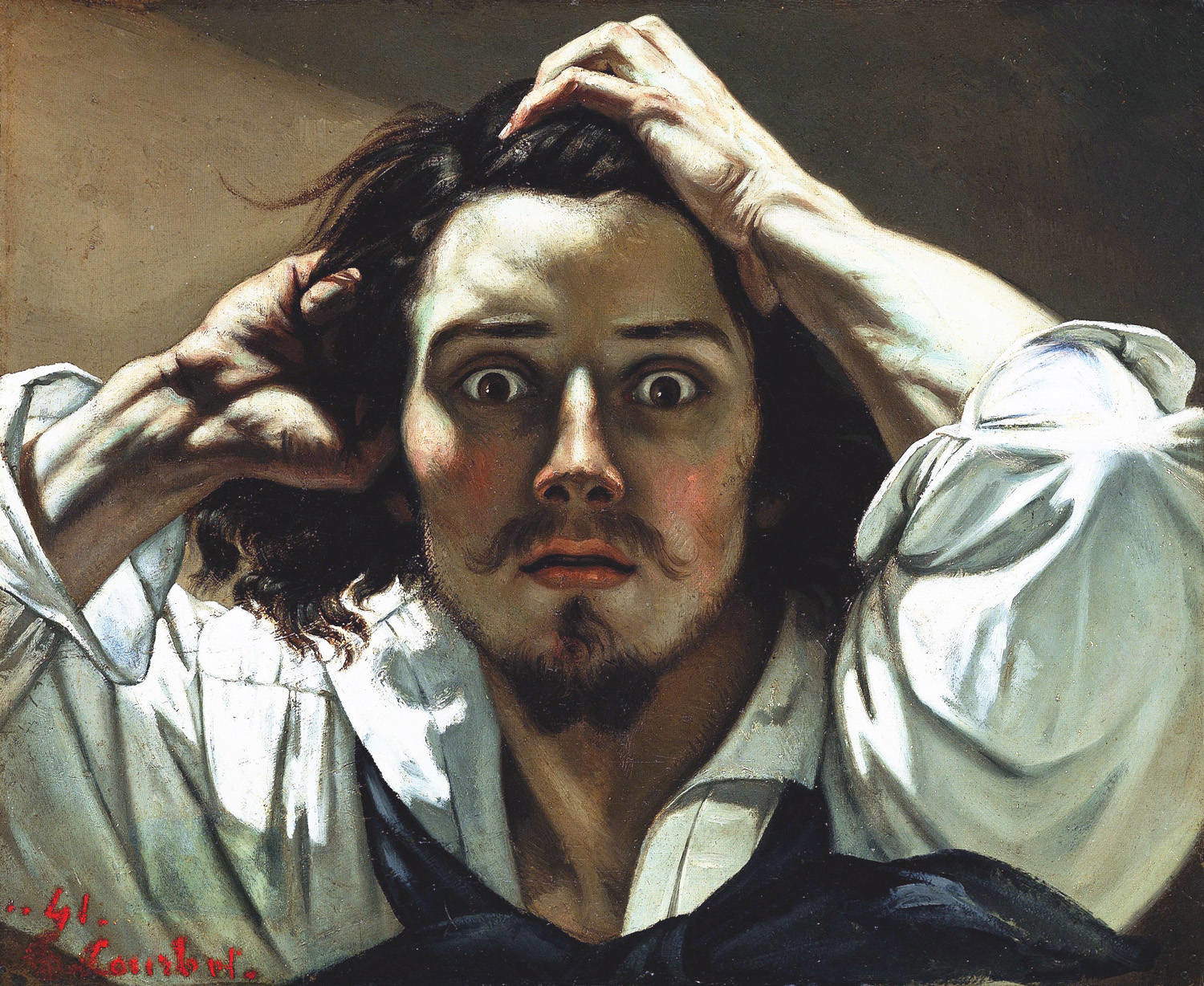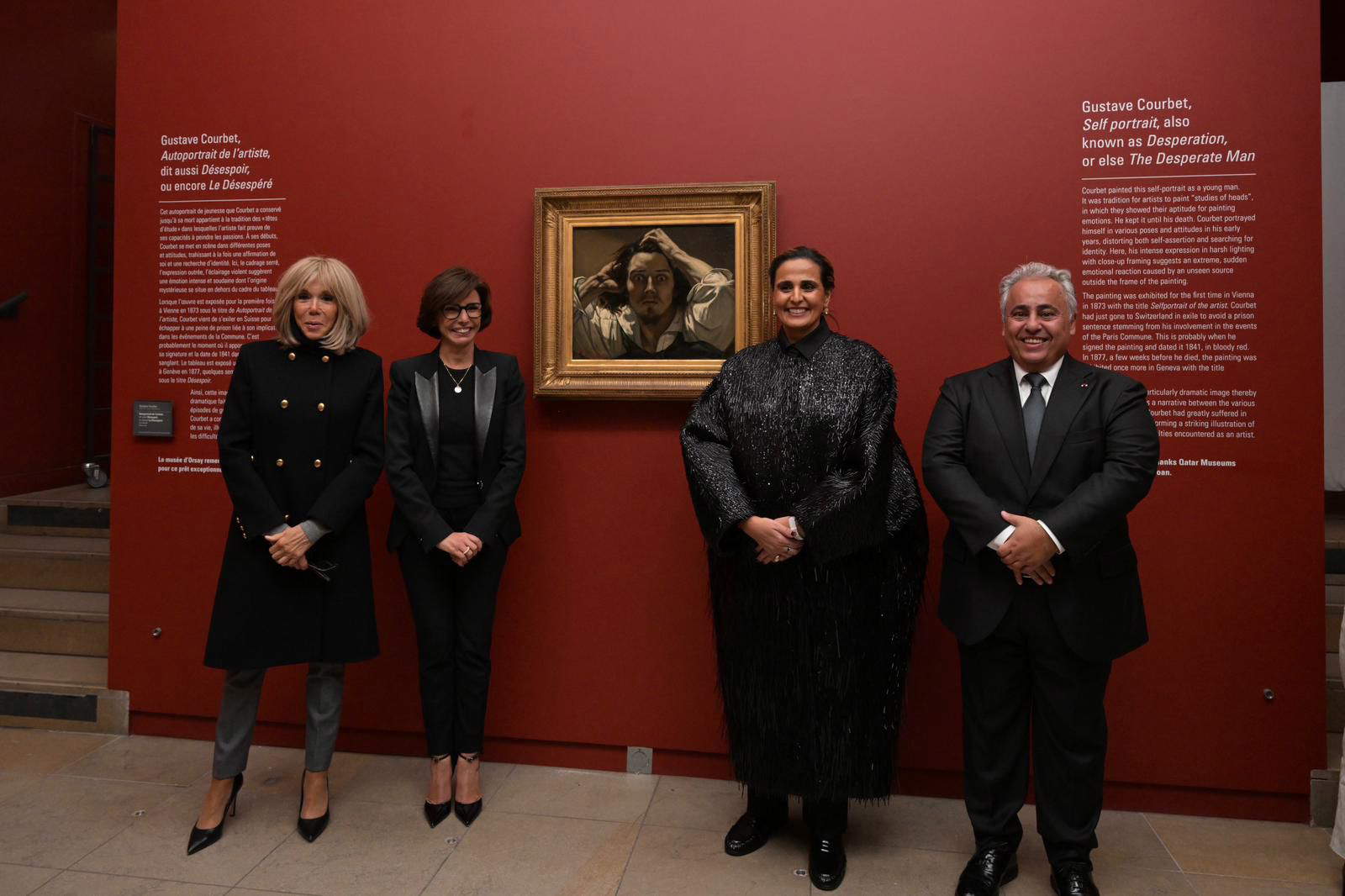The famous Self-Portrait by Gustave Courbet (Ornans, 1819 - La-Tour-de-Peilz, 1877) known as Le Désespéré (“The Despairing Man”) was revealed today to be the property of the Qatar Museums: the news came as an agreement was announced between Qatar Museums and the Musée d’Orsay through which the work is now displayed in the halls of the Paris museum, offering the public an opportunity to admire one of the most intense and dramatic masterpieces of nineteenth-century painting. The loan, announced on the occasion of an official tribute to Sylvain Amic, recently deceased president of the Musées d’Orsay et de l’Orangerie, is meant to represent a symbolic gesture of cultural cooperation between France and Qatar.
The painting, which before becoming the property of Qatar was in a private collection, was loaned to the Musée d’Orsay thanks to an agreement signed on April 20 in Doha during the official visit of French Culture Minister Rachida Dati. The agreement, signed between Qatar Museums and the Établissement Public du Musée d’Orsay et du Musée de l’Orangerie - Valéry Giscard d’Estaing, stipulates that the loan of Courbet’sSelf-Portrait is the first step in a broader cultural collaboration between the two institutions.
The painting will remain on display in Paris until the opening of theArt Mill Museum in Doha, the future museum dedicated to Qatar Museums’ collection of modern and contemporary art. Thereafter, after an initial period of presentation at the new Qatari venue, the work will be displayed alternately between Doha and Paris, in an ongoing dialogue between the two institutions and their respective collections.

On the occasion of the official tribute to Sylvain Amic, Qatar Museums president Sheikha Al Mayassa bint Hamad bin Khalifa Al Thani announced that the loan of Le Désespéré is dedicated to the memory of the president of the Musées d’Orsay et de l’Orangerie, a great scholar of Courbet’s work and a leading figure in the French museum world. Sheikha Al Mayassa recalled how Amic was a “visionary who understood the need for works of art to travel and be accessible in different parts of the world.” She emphasized how his work, conducted in collaboration with Qatar Museums and the French Ministry of Culture, made possible this long-term loan of Courbet’s famous self-portrait, purchased for the future Art Mill Museum in Doha.
In her remarks, Sheikha Al Mayassa also wished to establish a parallel between the figure of Courbet and that of Amic: "Le Désespéré reflects Courbet’s inner struggle to free himself from artistic conventions and make himself understood. Similarly, Sylvain was able to transcend the status quo, expanding the museum experience beyond traditional norms. We honor his memory by inaugurating Le Désespéré at the Musée d’Orsay, with pride in knowing that the work will travel between Doha and Paris and with confidence that his legacy will continue to inspire a new generation of museum directors and curators."
Amic, who had devoted much of his career to the study of Courbet’s work, had participated directly in preliminary discussions on the agreement, along with representatives of the French Ministry of Culture and Qatar Museums. His contribution had been instrumental in making possible the arrival of the work in Paris, where it had not been exhibited since 2007-2008, the year of the major retrospective devoted to the artist between the National Galleries of the Grand Palais, the Metropolitan Museum in New York, and the Musée Fabre in Montpellier.

Painted around 1844-1845, Courbet’sSelf-Portrait, also known as Le Désespéré, is one of the French painter’s most emblematic and mysterious works . Between 1842 and 1855, Courbet produced about twenty self-portraits, alternating between drawings and paintings in which he experimented with different mise-en-scène inspired by the Romantic tradition. However, none of them reaches the dramatic and psychological intensity of Le Désespéré.
In the painting, the artist portrays himself as a tormented bohemian: wearing a billowing white shirt and a blue blouse, his eyes wide open, his mouth half-open, and his hands grasping his hair in a desperate gesture. The tight framing and violent light give the scene extreme emotional tension, while the motif of despair remains ambiguous, suspended between theatrical fiction and genuine introspection.
The work, which Courbet kept with him until his death, was not exhibited during his most active artistic life. Only after the Paris Commune, and the artist’s subsequent voluntary exile to Switzerland, did the painting leave his studio to be presented to the public in 1873, alongside the Vienna World’s Fair, under the title Autoportrait de l’artiste. On that occasion, Courbet added his signature in red and backdated the work to 1841. A few months before his death, he re-presented it to the public in Geneva, in 1877, with a new title: Désespoir.
The intensely dramatic image has over time become one of the most famous in nineteenth-century painting, a symbol of the condition of the modern artist, suspended between ambition, isolation and suffering. Its virtuosic execution, expressive power and symbolic charge helped make this self-portrait a key work of European realism, as intimate as it is universal.
Today, Le Désespéré welcomes visitors to the Musée d’Orsay in the first room of the exhibition itinerary, in the left aisle (Room 4), dedicated to the birth of realism and the relationship between the 1848 Revolution and the arts. In this placement, the work dialogues with masterpieces by Jean-François Millet and Honoré Daumier, offering an overview of the origins of a pictorial language that revolutionized the representation of reality.
The presence of Le Désespéré reinforces one of the most significant nuclei of the Musée d’Orsay’s collections: that devoted to the self-portrait, a genre to which Courbet devoted himself consistently throughout his career. Indeed, the museum has other key works by the painter, including L’Homme à la ceinture de cuir (“The Man with the Leather Belt”), which was presented at the 1846 Salon, and L’Homme blessé (“The Wounded Man”), exhibited in the Pavillon du Réalisme in 1855, along with the famous Atelier du peintre (“The Artist’s Studio”), in which the self-portrait takes on monumental dimensions.
The expressive intensity and strength of Le Désespéré promise to make it one of the Musée d’Orsay’s most admired presences for the duration of the loan, while renewing interest in the figure of Gustave Courbet and his legacy in the landscape of modern art.
 |
| Qatar turns out to own "Desperate" Courbet's masterpiece |
Warning: the translation into English of the original Italian article was created using automatic tools. We undertake to review all articles, but we do not guarantee the total absence of inaccuracies in the translation due to the program. You can find the original by clicking on the ITA button. If you find any mistake,please contact us.